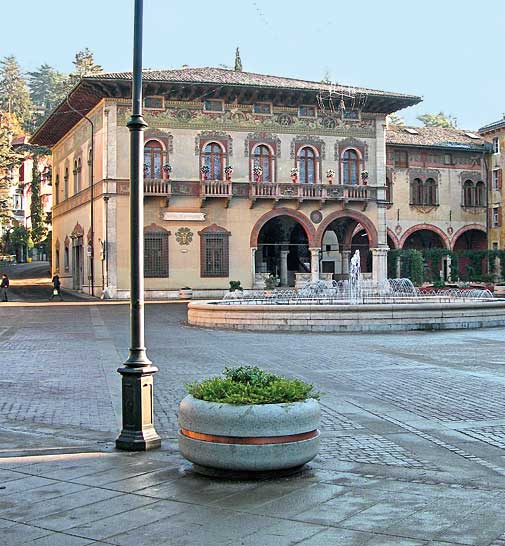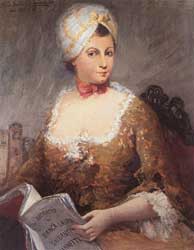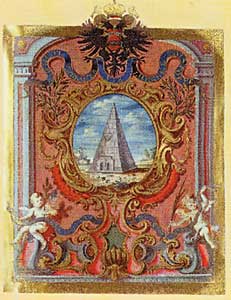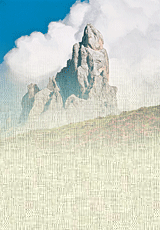Accademia Roveretana degli Agiati
Latest news from the 18th century
Annalisa Dolzan

| |
|
|
| |
If it weren’t for the powdered wig this would look like Mauro. Bianca Laura Saibante, instead, reminds me of an ex colleague, a stern teacher.
The founders of the Accademia Roveretana degli Agiati look familiar. Despite the severity of their portraits, I know their cultural meetings were fun. |
|
 |
|
| |
|
|
Not by silk alone.
 In 1750 a literary circle started meeting at the Saibantes’, around Bianca Laura and her husband, Esq. Giuseppe Valeriano Vannetti, the literati Girolamo Tartarotti, Francesco Antonio, Giuseppe Matteo Felice Giovanni and abbé Gottardo Antonio Festi, teachers at the local grammar school. In 1750 a literary circle started meeting at the Saibantes’, around Bianca Laura and her husband, Esq. Giuseppe Valeriano Vannetti, the literati Girolamo Tartarotti, Francesco Antonio, Giuseppe Matteo Felice Giovanni and abbé Gottardo Antonio Festi, teachers at the local grammar school.
They were five descendants of well-to-do Rovereto families and emulated the European high society, with the aim to shake up the torpor and bring intellectual excitement in town, “only abundant in silk, cocoons and silkworms” – and moral backwardness, claimed Tartarotti.
So the Accademia Roveretana degli Agiati di Scienze, Lettere ed Arti – an academy of sciences, letters and arts – was born. “Degli agiati” means both “comfortably affluent” and lentorum, a Latin reference to state that intellectual activity is otium. The task of symbolizing human intellect which – with no hurry and apparent effort aspires to knowledge - is entrusted to the academy emblem, bearing a little snail that slowly climbs a pyramid.
Correspondence with European scholars and literati soon made the gatherings at the Saibantes quite crowded: They were opportunities to discourse on science and philosophy; participants composed sonnets and tales – mainly humorous. As the statute required them to leave a copy of their compositions with the Academy, it soon built up the historical core of the archive and library. Later the Academy also started an art collection. It was inaugurated with a portrait of empress Maria Theresa of Austria, whom the Agiati asked for a formal recognition in 1752.
 The royal decree dates September 29th 1753: since then the academy emblem bears the Hapsburg double-headed eagle and the institution - boasting the title of royal-imperial - is entitled to enjoy rights and privileges granted to other important cultural institutions in the Hapsburg empire. The royal decree dates September 29th 1753: since then the academy emblem bears the Hapsburg double-headed eagle and the institution - boasting the title of royal-imperial - is entitled to enjoy rights and privileges granted to other important cultural institutions in the Hapsburg empire.
But this is history. Libraries swarm with erudite pages filled with names, dates and honours. What I want is a contemporary testimony. And so I go looking for the president of the Agiati, Prof. Livio Caffieri (retiring at the time of writing), and he tells me the vicissitudes of this centuries-old institution.
After landing on the wrong floor of Palazzo della Fondazione della Cassa di Risparmio di Trento e Rovereto, in piazza Rosmini, where the Academy has its seat, I finally find the private elevator that opens onto a muffled corridor and enter Prof. Caffieri’s office. Welcome among the Agiati!
Don’t call them “globalized”
A former teacher of Italian and Latin and later dean «in the years of students riots», Prof. Caffieri is the president of the Rovereto institution since 1993. Although centuries have passed, he feels very close to Empress Maria Theresa «who contributed to develop Trieste, my home town - he says – encouraging the building of the port and making it the largest seaport in the Hapsburg empire». No wonder exchanges were so numerous and intense in the 18th century. «Rovereto was at the borders of the empire, and the hometown of many affluent intellectuals of both Italian and German education.  Many studied in Innsbruck, Salzburg or Vienna and later completed their education in Padua, Bologna, Siena or in Rome. We can certainly speak of a sound European education. Also because the shadow of nationalism was not yet looming on Europe, back in 1750». Among its illustrious Italian members the Academy boasts the priest and philosopher Antonio Rosmini, the futurist painter Fortunato Depero and the celebrated Venetian playwright Carlo Goldoni. Today it has 330 members: those coming from Trentino Alto Adige are called “ordinary”, and the rest are “correspondents”. Admission requires two proposers among the Academy members, plus subsequent evaluation and voting by the Council of the Academy. Many studied in Innsbruck, Salzburg or Vienna and later completed their education in Padua, Bologna, Siena or in Rome. We can certainly speak of a sound European education. Also because the shadow of nationalism was not yet looming on Europe, back in 1750». Among its illustrious Italian members the Academy boasts the priest and philosopher Antonio Rosmini, the futurist painter Fortunato Depero and the celebrated Venetian playwright Carlo Goldoni. Today it has 330 members: those coming from Trentino Alto Adige are called “ordinary”, and the rest are “correspondents”. Admission requires two proposers among the Academy members, plus subsequent evaluation and voting by the Council of the Academy.
Cultural exchange, openness to interdisciplinary study and relationships with major Italian and European universities and academies are still at the core of the Agiati activities. As one of its main purposes the Academy still intends to keep a global historical, cultural and humanistic perspective. This aims translates into symposia and conferences, book presentations and exchange of publications, claims Prof. Caffieri – not without pride - «in collaboration with both local and national institutions, as the Accademia dei Lincei, the universities of Verona, Padua, Bologna and many others, with a yearly average of 33 initiatives.  These exchanges allow us to host personalities of the highest level. And we pride ourselves in being able to publish the proceedings of our symposia (which very few can do): We held 4-5 a year; among them I’d like to recall those on Saba and on Niccolò Tommaseo, the most important but least known 19th century polygraph in Europe». These exchanges allow us to host personalities of the highest level. And we pride ourselves in being able to publish the proceedings of our symposia (which very few can do): We held 4-5 a year; among them I’d like to recall those on Saba and on Niccolò Tommaseo, the most important but least known 19th century polygraph in Europe».
Among the recent initiatives of the institution stands out the exhibition dedicated to Italian archaeology in the Mediterranean «Orsi, Halberr e Gerola. L’archeologia italiana nel Mediterraneo», set up with the Museo civico di Rovereto. A series of accompanying conferences was held in December 2009; the exhibition is open until June 30th 2010.
If you wish to leaf through the scientific and literary contributions of the Taudero, Oddone, Pier Alvise, Udalrico and other historical members of the Academy you will find plenty among the 50 thousand titles of the Agiati library (hosted at the Rovereto town library). In keeping pace with the times - albeit without the odour of antiquity – some texts are also available online at http://www.agiati.org
|
 NUMBER 9
NUMBER 9

 NUMBER 9
NUMBER 9
